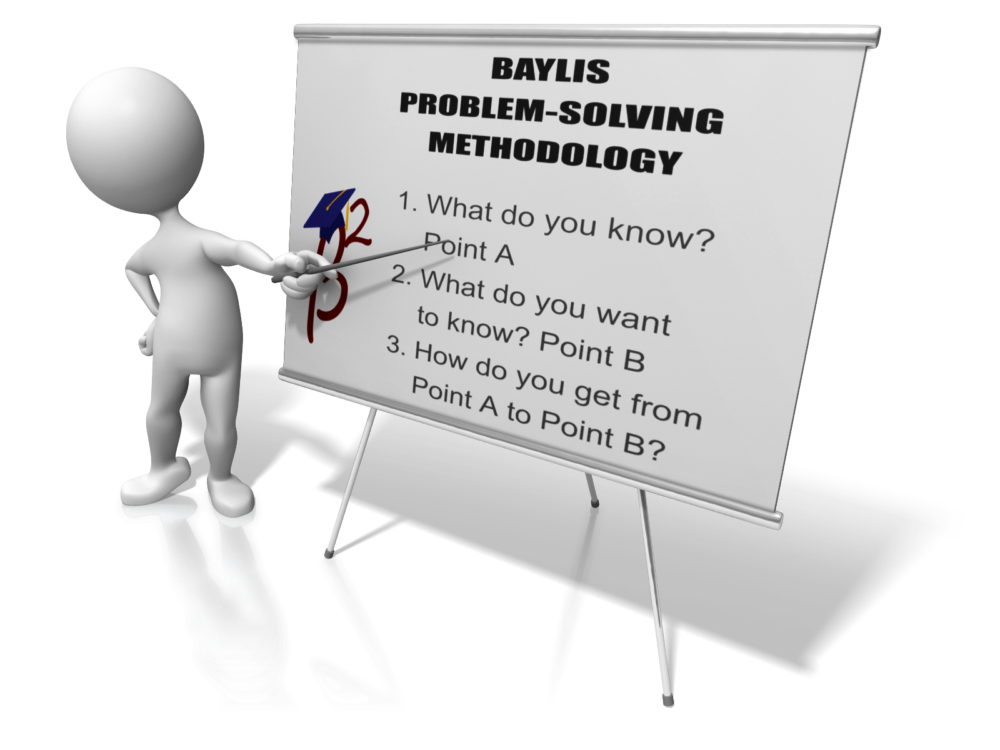
In my post Getting Back in the Saddle from Tuesday, January 21, I indicated that my next post would be about a proposal for the introduction of the Admissions Multiplier Effect, a new Key Performance Indicator (KPI) for higher education. On multiple attempts to compose such a post, I found myself running into a brick wall.

However, on closer examination, the brick wall turned out to be more like a series of hurdles over which I kept tripping.

As a mathematician by training, during my college days I developed my own approach to problem-solving. My approach was centered around three questions. These three questions formed a basic methodological approach which I used in every mathematics, statistics, or science class I ever taught. My three questions were the contextual foundation in each of the three statistics textbooks I coauthored.

The first question and beginning point is “What do I know?” Once that has been established, the second question is “What do I want to know?”

If I know where I am and where I want to go, I can then plot out a course that answers the third question “How do I get from what I know to my destination of what I want to know?”

Faced with any problem, if you can answer these three questions, you have reached the crux of this problem. You have completed the most difficult task in solving this problem. You’re done with the majority of the heavy lifting. You are generally finished with the shedding of the blood, sweat, and tears. The hard work is almost complete. The only thing left to do is to follow the path that you laid out.
I have used this methodology to solve problems not only in all aspects of my personal life, but I have also used this approach in every mathematics, statistics or science course I ever taught. I included these questions in each course syllabi I distributed to students. I encouraged my students to test the effectiveness of the method in their encounters with problems.
In addition, these questions formed the contextual foundation of the three statistical textbooks I coauthored. I view statistics as a problem-solving tool. We included these questions in the opening paragraphs of the Preface of each textbook. Throughout the textbook, the three questions were the outline we used to present our version of a standard “Statistical Method” of problem-solving. We continued to reemphasize them as we introduced each statistical tests. The statistical tools such as ANOVA, chi-square, correlation, F-test, MANOVA, path analysis, Pearson-r, regression, Spearman-rho, t-test, and z-test, become parts of the path to be taken from what one knows to what one wants to know.
Returning to the original problem proposed by this post the introduction of a new KPI for higher education raises a number of other
questions, such as:
-

How do we know if a college is meeting its operational and strategic goals? Image courtesy of Presenter Media What is a performance indicator (PI)?
- What is a key performance indicator (KPI)?
- What are the standard KPIs for higher education?
-

Many in higher education reject the idea that higher education is a business. Image courtesy of Presenter Media. Why do so many in higher education believe that higher education is not a business?
- Why do so many academicians shun the use of performance indicators in higher education?
- Why do I strongly believe the enterprise of higher education should be managed as if it were a business?
-

What are the admission and retention processes used by colleges? How can we tell if a college is meeting its admissions, retention and graduation goals successfully? Image courtesy of Presenter Media. What are the primary aspects of the admission and retention processes in higher education?
- What are some of the KPIs that are related to the admission and retention processes in higher education?
- What is my definition of the Admission Multiplier Effect (AME)?
- Why do we need to introduce the AME?
- How should we introduce and use the AME?
The figurative brick wall I hit in the first paragraph of this post was the magnitude of work necessary to provide reasonable and intelligible answers to the three questions of the Baylis Problem-Solving Method.
To answer all these questions in one post on which I have imposed a 1000-word limit is an impossibility. In fact, I am not sure how many posts it will take me to answer all these questions. The best thing that I can do is to dive into the pool and start writing.
Since I am fast approaching that self-imposed limit of 1000 words for each post, I will close out this post. In my next post, I will address the question of “What are performance indicators?” Since I haven’t written the upcoming posts yet, at the end of each upcoming post, I will indicate the topic of the next post. Since I am also still trying to address some health issues related to a chronic-fatigue condition, I can’t guarantee my continued ability to maintain the substantial writing schedule that I have laid out for myself. For this reason, I have asked some friends and colleagues to step in and publish a guest post now and then. If any of my readers would be interested in taking a shot at writing such a post, please contact me and we’ll talk.